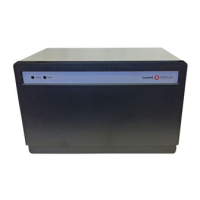Step 4.
Trouble on an Accessory
Determine if you have a standard telephone with a modular cord/plug.
Note:
You may be using a standard telephone with a modular cord/plug
as a power failure transfer telephone. The power failure transfer
telephone is the telephone connected to the Type III Cartridge in
the control unit. The power failure transfer telephone can be
used for this test, but a Model 820 voice terminal cannot.
IF
THEN
You have a standard telephone
Go on to Step 5.
with a modular cord/plug (it must
also be compatible with the tone or
rotary dialing service provided by
the local telephone company),
You do not have a standard tele-
Skip to Step 8.
phone with a modular cord/plug,
Step 5.
Remove the Modular Line Cord (D4CH), that extends to the line-powered
alert, from the network interface.
Step 6.
Plug the cord of the standard telephone into the network interface and
make an outward call.
IF
The call cannot be completed,
The call is completed,
THEN
The trouble is caused by the local
telephone company equipment.
You may have a two-line or
eight-line adapter connecting
the line with trouble to the
network interface. If you
have not checked the adapter,
it could be causing the trou-
ble.
Call your local telephone
company to report the line with
trouble.
Go on to Step 7.
Step 7.
Unplug the cord of the standard telephone from the network interface,
then plug the modular line cord that extends from the line-powered alert
back into the network interface.
Step 8.
Switch the modular line cord of the line known to be working with the
modular line cord connected between the line-powered alert and the con-
trol unit (see Figure 49).
Page 96

